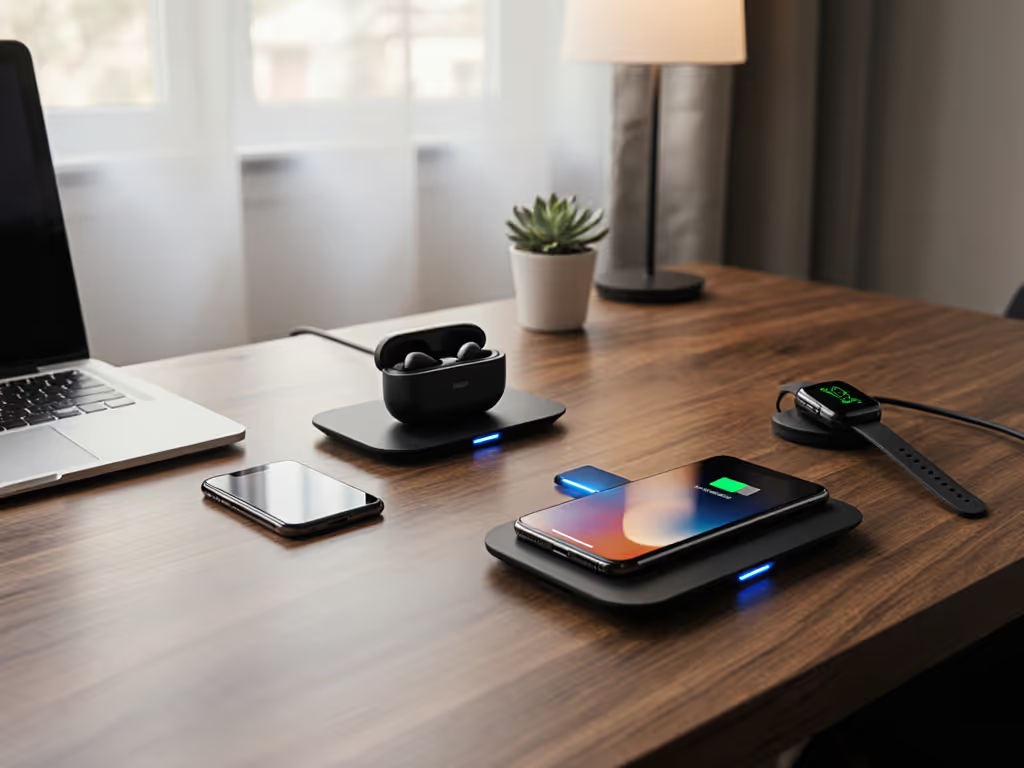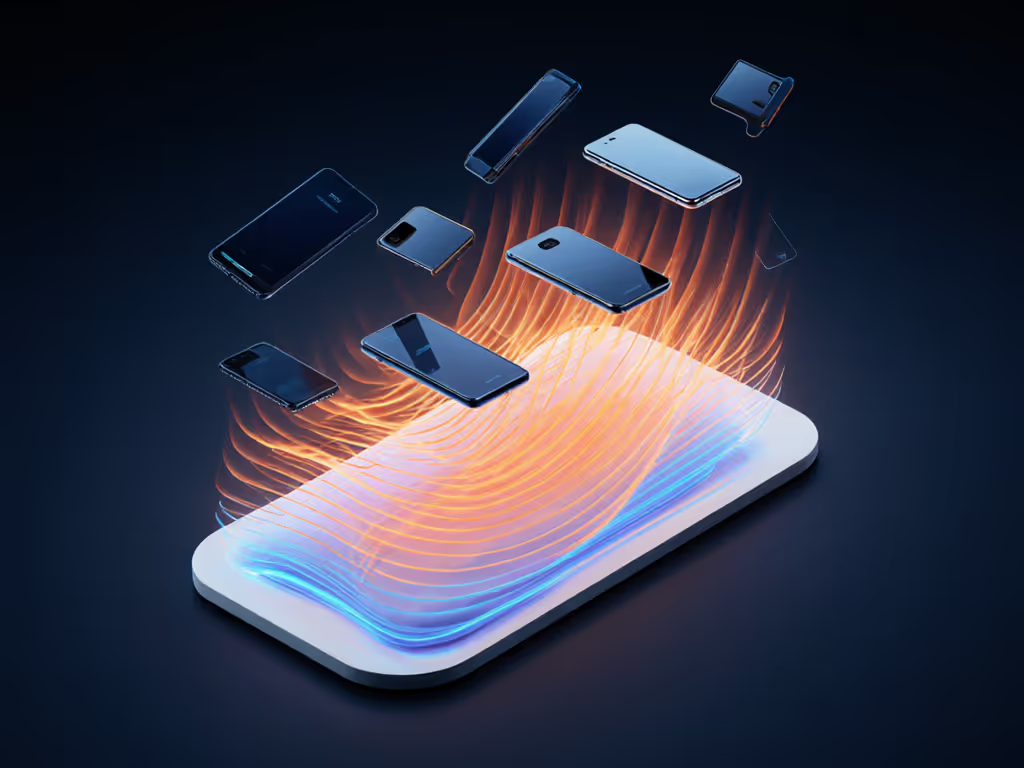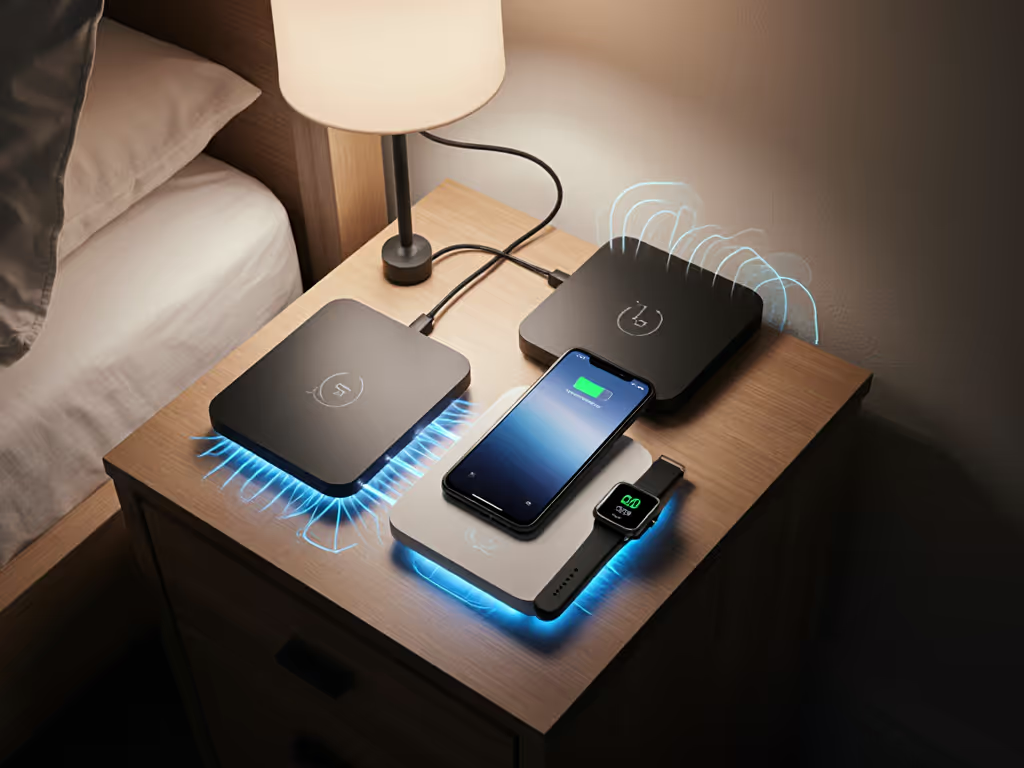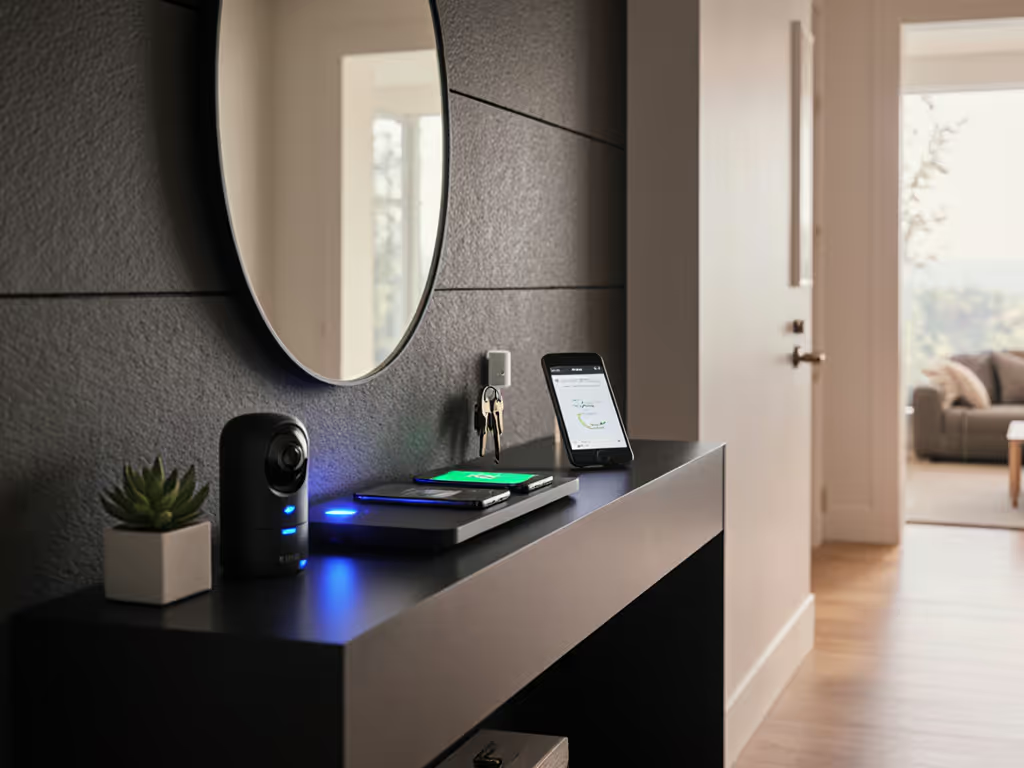
Multi-Device Wireless Charging Pads: Cool, Safe & Unified

You've likely encountered the frustration of managing multiple devices across your home and workspace. A well-designed multi-device wireless charging pad or a unified charging station can eliminate cable clutter while addressing your unspoken concern about battery longevity. As an independent researcher focused on lithium-ion longevity in consumer devices, I've seen how heat management directly impacts the lifespan of everyday tech. A cool battery is a long-lived battery (a principle that became personal during a summer road trip when a poorly designed mount allowed my phone to exceed safe operating temperatures). What started as a navigation failure quickly became a lesson in thermal management that now informs my approach to wireless charging solutions.
Understanding Thermal Dynamics in Wireless Power Transfer
Wireless charging inherently generates more heat than wired alternatives due to energy transfer inefficiencies. When discussing multi-device wireless charging pad performance, we must consider the fundamental physics: electromagnetic induction creates eddy currents that produce waste heat proportional to the square of the current. Laboratory measurements consistently show that charging above 40°C accelerates lithium-ion battery degradation by approximately 20% for every 10°C increase beyond this threshold, according to data from the Battery University research consortium.
Keep it under 40°C when possible.
This thermal reality explains why many premium multi-device chargers now incorporate thermal management systems. Samsung's 15W Duo Pad, for instance, includes an internal fan that maintains operating temperatures within safe parameters (a feature particularly valuable during extended charging sessions). Without such safeguards, simultaneous charging of multiple devices can create cumulative heat that exceeds critical thresholds, especially when devices are encased in thick protective covers that impede heat dissipation.

Decoding Charging Standards: Qi, Qi2, and MagSafe Compatibility
Before selecting a wireless charger, it's essential to understand the standards landscape: For a deeper dive into thermal differences and device longevity across standards, see our Qi vs MagSafe heat comparison.
- Qi (pronounced "chee"): The Wireless Power Consortium's original standard, supporting up to 15W charging with basic temperature monitoring
- Qi2: The 2023 evolution incorporating MagSafe-like alignment and communication protocols, featuring improved foreign object detection (FOD) and enhanced thermal management
- MagSafe: Apple's proprietary magnetic charging system (15W) that works with Qi2 devices but offers optimal performance only with Apple-certified accessories
These standards operate within a careful balance of power delivery and safety protocols. The Qi2 specification, for example, mandates stricter temperature monitoring than its predecessor, requiring chargers to reduce power output when internal temperatures exceed 45°C, a safeguard that directly protects your devices' battery health. This advancement addresses a critical pain point for multi-brand households where mixed-device compatibility previously resulted in inconsistent thermal management.
When evaluating a multi-device charger, verify its certification status through the Wireless Power Consortium's official database. Counterfeit products often lack proper thermal sensors and may operate outside safe temperature ranges, risking accelerated battery wear. The safest options will explicitly state compliance with Qi2 or MagSafe standards and include multiple temperature sensors positioned beneath each charging coil.
Optimal Implementation Scenarios
Home Office Wireless Setup
For productivity-focused environments, select a multi-device wireless charging pad with sufficient coil separation to prevent heat buildup between devices. The ideal office wireless setup features individual charging zones with at least 1.5 inches of separation between coils and a maximum power output of 10-15W per device. Higher wattages create unnecessary heat without meaningful speed gains for most daily charging scenarios.
Consider implementing these safeguards:
- Use a 30W+ GaN power adapter to ensure consistent power delivery without overheating the adapter itself
- Choose models with diffused, red-status LEDs that won't disrupt focused work
- Position your charging station away from direct sunlight or heat-generating electronics
- Opt for models with non-slip surfaces that allow proper airflow beneath devices
Nightstand Configuration
Your bedroom charging station requires special thermal considerations since extended overnight charging represents the longest continuous thermal stress period. The optimal family charging solutions for nightstands should feature:
- Automatic dimming or complete LED shutdown during nighttime hours
- Natural cooling through passive heat dissipation rather than active fans (which create noise)
- Temperature monitoring that reduces power output during the final 20% of charging
- Strategic coil placement that prevents heat buildup between multiple devices

Vehicle Integration
Car environments present unique thermal challenges due to elevated ambient temperatures. Protect your devices by selecting mounts with:
- Aluminum construction for passive heat dissipation
- Magnetic systems that maintain minimal contact distance between charger and device
- Positioning away from direct sunlight (dash mounts are less optimal than vent mounts)
- Power delivery systems that throttle charging rate when cabin temperatures exceed 35°C
This last feature proved crucial in my own experience (a lesson learned after troubleshooting navigation failures during a summer road trip when a poorly designed mount allowed my phone to exceed 43°C). The temperature spike caused battery estimation errors and system instability that could have been avoided with proper thermal management.
Quantifiable Safety Thresholds for Daily Use
Based on manufacturer specifications and independent testing, these temperature thresholds should guide your charging decisions:
| Scenario | Safe Threshold | Action Required |
|---|---|---|
| Active Charging | Below 40°C | No action needed |
| Peak Temperature | Below 45°C | Monitor closely |
| Sustained Temperature | Below 35°C | Optimal for battery health |
| Warning Threshold | Above 45°C | Reduce charging load or switch to wired |
A practical safeguard I recommend for all multi-device charger setups is implementing temperature monitoring through simple observation. If your phone becomes too hot to comfortably hold against your cheek during charging, it's exceeding optimal thermal parameters. More sophisticated users can leverage third-party battery monitoring apps that track temperature in real time, a practice that transformed my own charging habits after that fateful road trip.
Future-Proofing Your Charging Ecosystem
When investing in a charging station, prioritize models that:
- Support both Qi2 and MagSafe protocols for cross-platform compatibility
- Feature modular design that allows component upgrades as standards evolve
- Include replaceable charging coils to accommodate future device form factors
- Offer firmware update capabilities to adjust thermal management algorithms
These considerations address the "hidden costs" pain point many consumers face when upgrading devices. Rather than replacing your entire charging ecosystem with each new phone generation, a thoughtfully selected multi-device wireless charging pad can evolve with your technology needs while maintaining optimal thermal performance.
Practical Recommendations for Longevity Preservation
After analyzing dozens of charging solutions, I consistently recommend these evidence-based practices:
- Limit continuous charging sessions to 8 hours maximum without device removal to allow cooling
- Remove thick cases (over 3mm) during charging sessions to enhance heat dissipation
- Position charging stations in naturally cool areas away from heat sources
- Use scheduled charging features to complete the final 20% of charge just before waking or usage
- Select multi-device charger options with independent temperature monitoring for each coil
Protect the pack, and performance naturally lasts the distance. By implementing these thermal management strategies, you'll not only extend battery lifespan but also enhance daily reliability, preventing those frustrating moments when your device shuts down during critical navigation or work sessions.
Multiply your setup's reliability by prioritizing thermal management from the outset. For those interested in deeper technical analysis, the Wireless Power Consortium's latest white paper on Qi2 thermal protocols offers valuable insights into the engineering behind safe, efficient wireless power transfer. Keep it under 40°C when possible, your battery will thank you years down the line.




